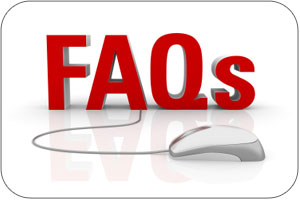Participant Frequently Asked Questions (FAQs)
-
How many years do I need to be fully vested?
Beginning May 1, 1991, you will need 5 years of credited service without a break in service.
-
How much time do I need to notify the Administration Office before I plan to retire?
30 days is preferred. You can apply up to 6 months in advance and 1 day in person.
-
What is the procedure for entering into retirement?
Please refer to the I am Ready to Retire page.
-
How soon after my retirement date will I receive my first Pension Benefit check?
This depends on when the paperwork was received and completed correctly. On average, it takes between two weeks to a month before the first payment is mailed or deposited in your bank account.
-
Taking a "Spousal Option" is one way to provide a continued and sure source of income for my spouse after my death, but would a "Term Life Insurance Policy" be cheaper?
This answer would depend on each Retiree’s personal circumstances.
You must compare the lessor amount of the monthly pension income resulting from the chosen level of “Spousal Benefits” (i.e. 50%, 75% or 100% Spousal Option) with the monthly premium of a “Term Life” insurance policy providing the same level of monthly income upon the death of the Retiree.
Also, one must consider the fact that “Term” Life insurance is not always renewable for another “Term.” Then what? What guarantee is there that the insurance company will stay in business for the next 10 to 20+ years? What if a payment is missed and the policy is cancelled?
Please note should the Retiree’s spouse die the Retirees’ pension benefit will “pop-up” to the benefit payable prior to the election of the Spousal Option.
-
Pre-Retirement Death Benefits. Who is entitled to a death benefit if the member dies before drawing their pension?
If you were vested and married at least 1 year before dying, then your current spouse is entitled to the 50% Joint & Survivor option available either when the member would have reached age 55 or the first month after the death. However, if you die prior to age 55, and at the time are otherwise eligible, the spouse’s pre-retirement death benefit will not commence until the first day of the month following the day you would have reached age 55, had you lived. Non-spousal beneficiaries (i.e. children, siblings, parents, etc.) the pre-retirement death benefits are suspended until the Plan is out of critical status and the Board of Trustees make a decision –to reinstate the pre-retirement death benefits to non-spouse beneficiaries.
-
What happens to my pension benefits upon my death after I retire?
If you were married, your spouse would continue receiving the regular pension benefit according to the “Spousal Option Benefit” selected by you and your spouse at retirement. If no spousal option was chosen at retirement, your benefits would stop upon your death. Other than the spousal option, there are no death benefits paid to any survivors or your estate.
-
Termination of Employment In Order to Retire. Can I still work and draw my pension?
In order to receive a pension benefit a member must have a 30 day bonafide termination from a contributing or formerly contributing employer or reciprocal Plan employer. If the current employer ever participated in our Pension Plan then the member must completely sever employment for 30 days. After 30 days they can be rehired by the employer but this would be subject to the re-employments rules.
If their current employer is non-union or not participating in our Pension Plan or reciprocal Plan they can work as much as they like.
-
Early vs. Disability Retirement. Which option is better for retirement?
Disability benefits were reduced to the same rate as Early Retirement when the Plan when into critical status. Unless the member is younger than age 55 the amounts paid for Early and Disability Retirement are the same. If the member must retire before age 55 on a Disability Retirement they will receive less than 35% of the full benefit available at age 65.
-
If I worked 4 1/2 years, how many hours will I need in my 5th year to be eligible for that year of benefits?
1,000 hours equals a full year. 660 equals half a year. No more than 1 credit can be earned in a single Plan Year.
-
What are the differences between vested year hours (how many) and service amount hours (benefit amount)?
Vested years are based on the contributions paid into the pension plan by contributing employers. Service amount is based on employment only.
-
What are my options for taking a Survivor Option for my spouse?
The Joint and Survivor options are, 100%, 75% and 50% of the monthly benefit available at retirement determined by members and spouses ages. The larger the gap in ages between the member and the spouse the smaller the benefit will be since it needs to stretch for both their lifetimes.
-
If after I'm fully vested, I leave the company, what if any, penalty will I pay at my legal age of retirement?
No penalty. At age 65 you will receive the full retirement benefit you have earned. Early Retirement is available as early as age 55, with a reduction in benefits for each month benefits are received prior to attaining age 65.
-
Do I carry my years of service with me even if I leave the company?
Once you are fully vested (5 years), you retain your benefits until retirement.
-
What is MPRA?
The Multiemployer Pension Reform Act of 2014 (MPRA) was enacted on December 16, 2014. The new law impacts all multiemployer defined benefit pension plans along with provisions which impact plans depending on their Pension Protection Act (PPA) zone status.
-
What are the Multiemployer plan disclosure rules?
Upon written request, the plan is required to provide to participants and contributing employers the following plan documents:
- Current Plan Document
- Latest Summary Plan Description
- Current Trust Agreement
- Requesting Employer’s Participation Agreement
- Form 5500
- Annual Funding Notice
- Audited Financial Statements
- Actuarial Valuation Report
- Funding Improvement or Rehabilitation Plan

